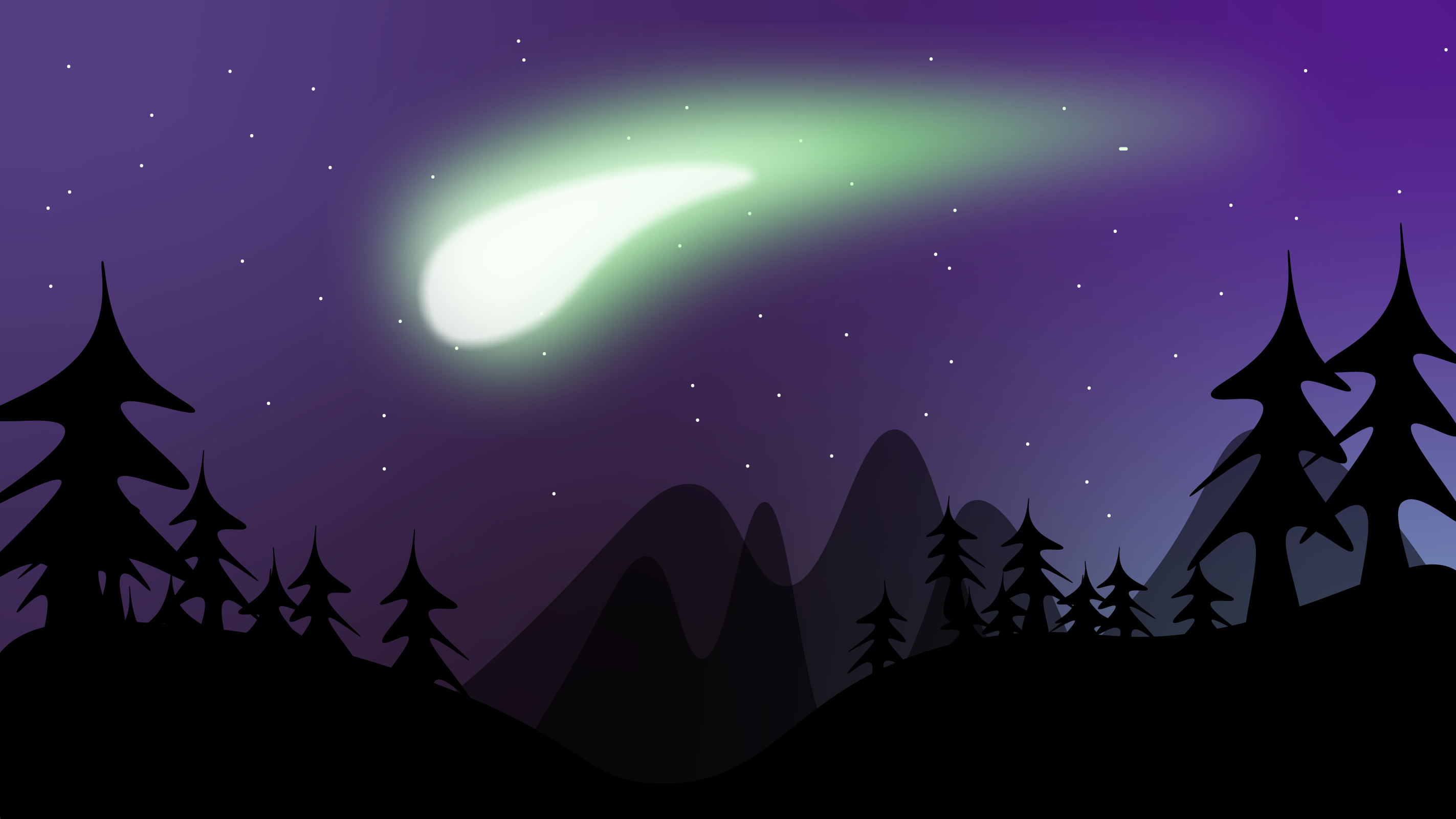If you look toward the northern sky on Feb.1 there might be a faint green glow flying overhead. “It’s a moving target, both from day to day and from hour to hour,” Andrea Goering, instructor of Physics and Astronomy at Lane Community College and University of Oregon explained. Goering shared her expertise on all things comets with The Torch.
How can people see the comet?
The comet is currently circumpolar, meaning it circles our pole star Polaris without dipping below our horizon. Since Polaris is in the northern sky, you should look northward to find the comet. It’s a moving target, both from day to day and from hour to hour, so I recommend finding the position of the comet in the sky using the free Stellarium web planetarium software, entering the time of night and location you’d like to observe from. I like to turn on the constellation lines and use the constellations to help guide my comet hunting. Tonight, for instance, the comet will be a bit to the East of the line connecting Polaris — in Ursa Minor or the Little Dipper — to Capella — in Auriga. It isn’t moving fast compared to these constellations, but over the next few weeks it will move toward and then past Capella.
It’s not easy to see though! The current magnitude,or brightness, of the comet is 5.4. In the magnitude scale, larger numbers mean dimmer stars, and smaller numbers mean brighter stars. For example, Sirius, the brightest star in our sky, has a magnitude of -1.46. The bright stars Capella and Polaris have magnitudes of 0.24 and 2.09, respectively. The dimmest we can see with the naked eye is about a magnitude of 5.5 – 6, so the comet is currently just barely visible without binoculars. The binocular limit is 10. The comet should still be within the binocular limit until about mid-March.
I haven’t seen it myself – I’ve been stymied by a) forgetting to go out on clear nights and b) it being cloudy every time I remember to go out! But my partner, who is currently experiencing clear skies in Wyoming, reports that the comet was a fuzzy blob through small binoculars. It has nowhere near the dramatic tail of Comet NEOWISE — which came through the inner solar system in 2020. Still, it’s worth looking for! Comets like this come around only rarely. This particular one has an orbital period of about 50,000 years. Compared to that, Comet Halley is a frequent visitor with its 75 year orbital period. On top of that, comets have highly eccentric orbits, meaning that they are oval in shape and very stretched out. Any comet makes a quick pass past the Sun before leaving on the rest of its long elliptical orbit far away from the inner solar system. Tomorrow, Feb. 1, will be the comet’s closest approach to the sun. After that, it will become more and more faint in the sky.
Moon phase makes a difference to observers too. Currently, the Moon is at about the first quarter — half full, going toward full. So, even though the comet is at its brightest, the moon is creating a lot of light too, and getting brighter each night. The good news is that it’s also rising later and later each day. By about Feb. 8, the moon won’t rise until after 8 p.m., but by that point the comet will be down to a magnitude 6.16.
What is a comet?
Comets are essentially “dirty snowballs” — chunks of frozen material, mainly water ice but also methane and some dusty, rocky bits. When they enter the inner solar system, the ice vaporizes and leaves the frozen nucleus of the comet, creating a giant vapor cloud known as the coma that can be as big as the planet Jupiter. The materials in the coma are excited by light from the sun, and the atoms and molecules in the excited coma glow according to their composition. There is a special “diatomic carbon” species that is rarely formed outside of comets, which is why they glow green. There’s not a lot of other stuff in space that glows green so this is really special to see!
The weather forecast, so far, calls for partly cloudy skies on Feb. 1. According to Goering this is a rare chance to see something growing green in the skies. So if there’s a chance to see it, the experts encourage people to take that opportunity.
Extra resources provided by Andrea Goering:



